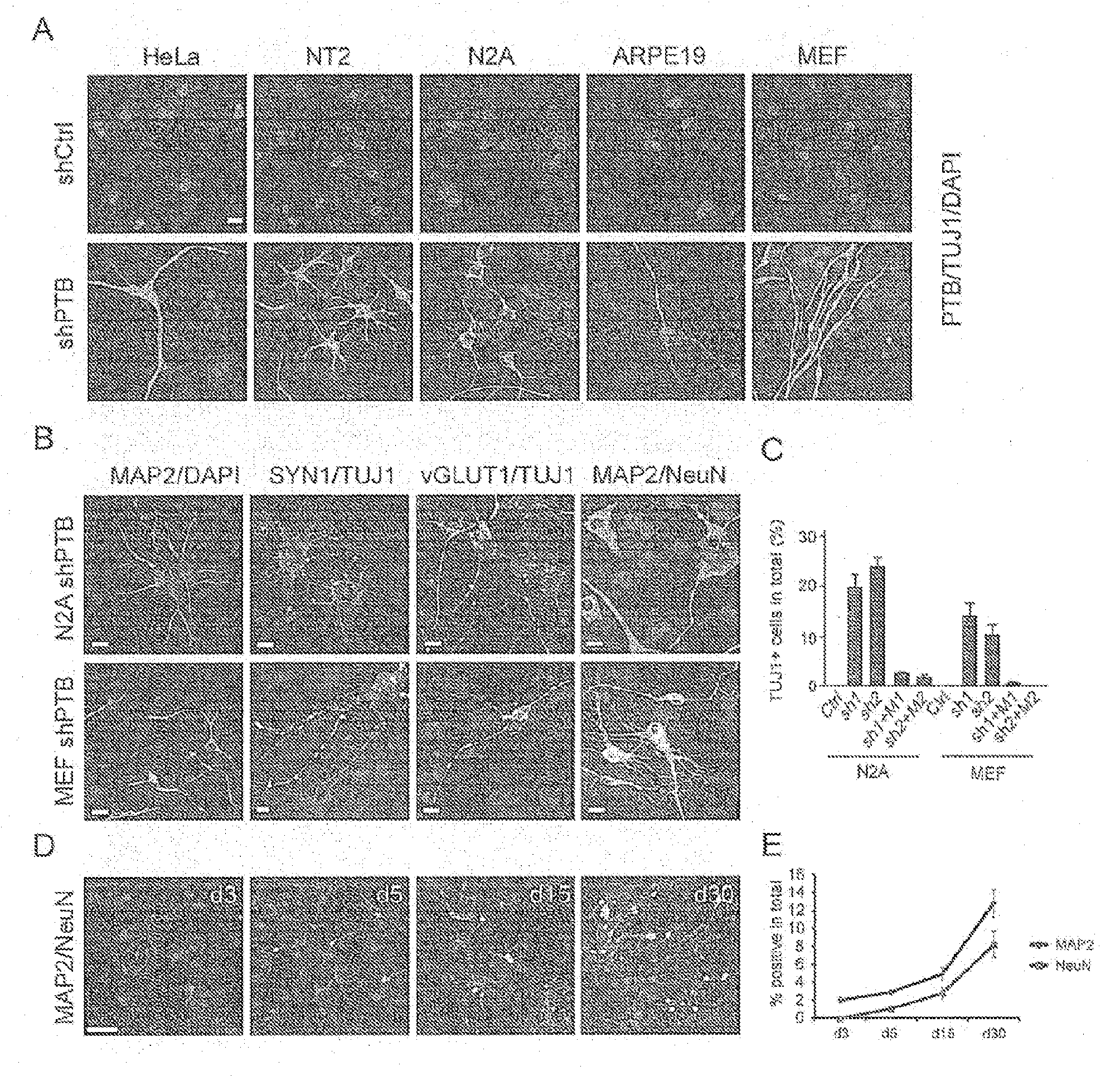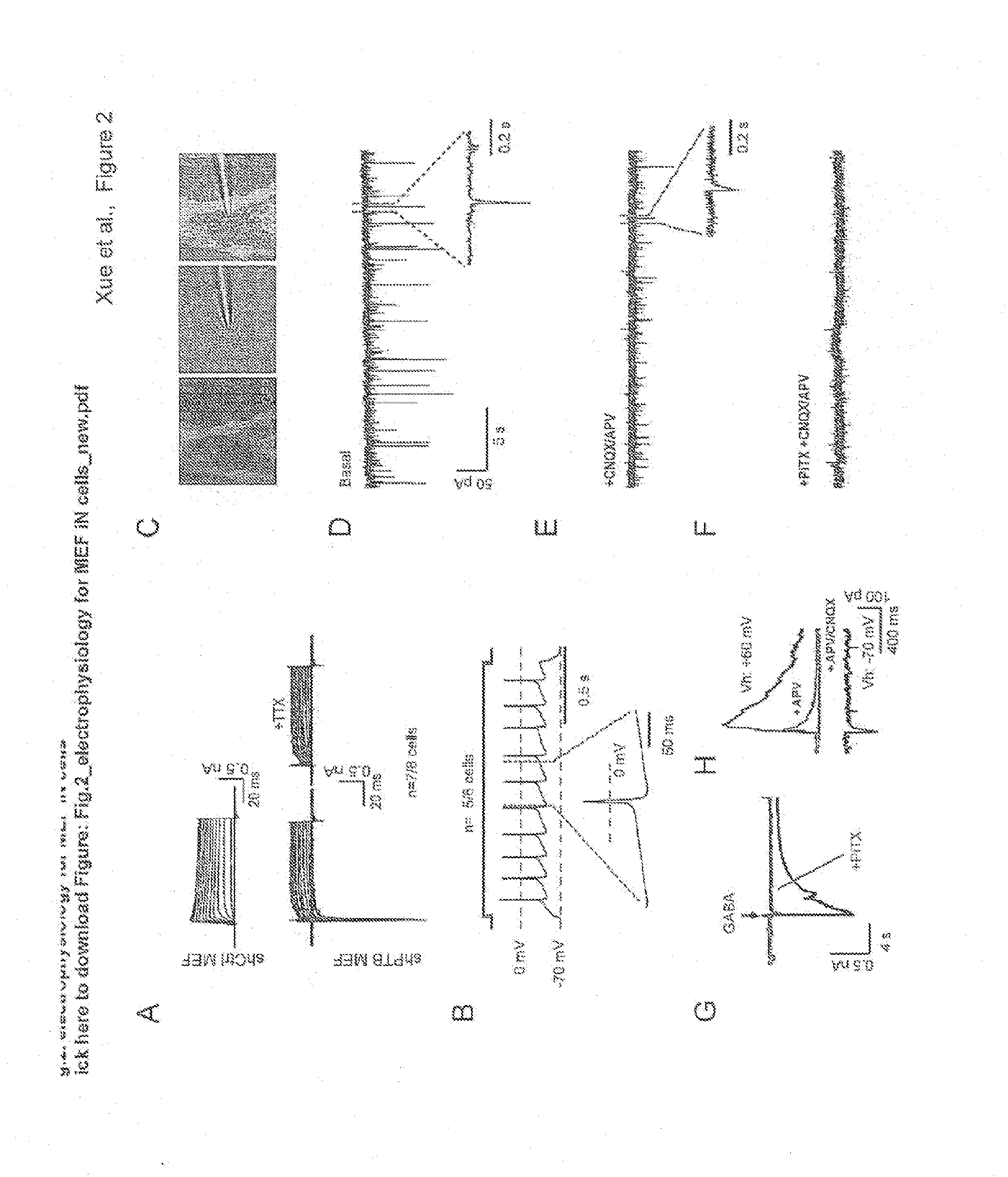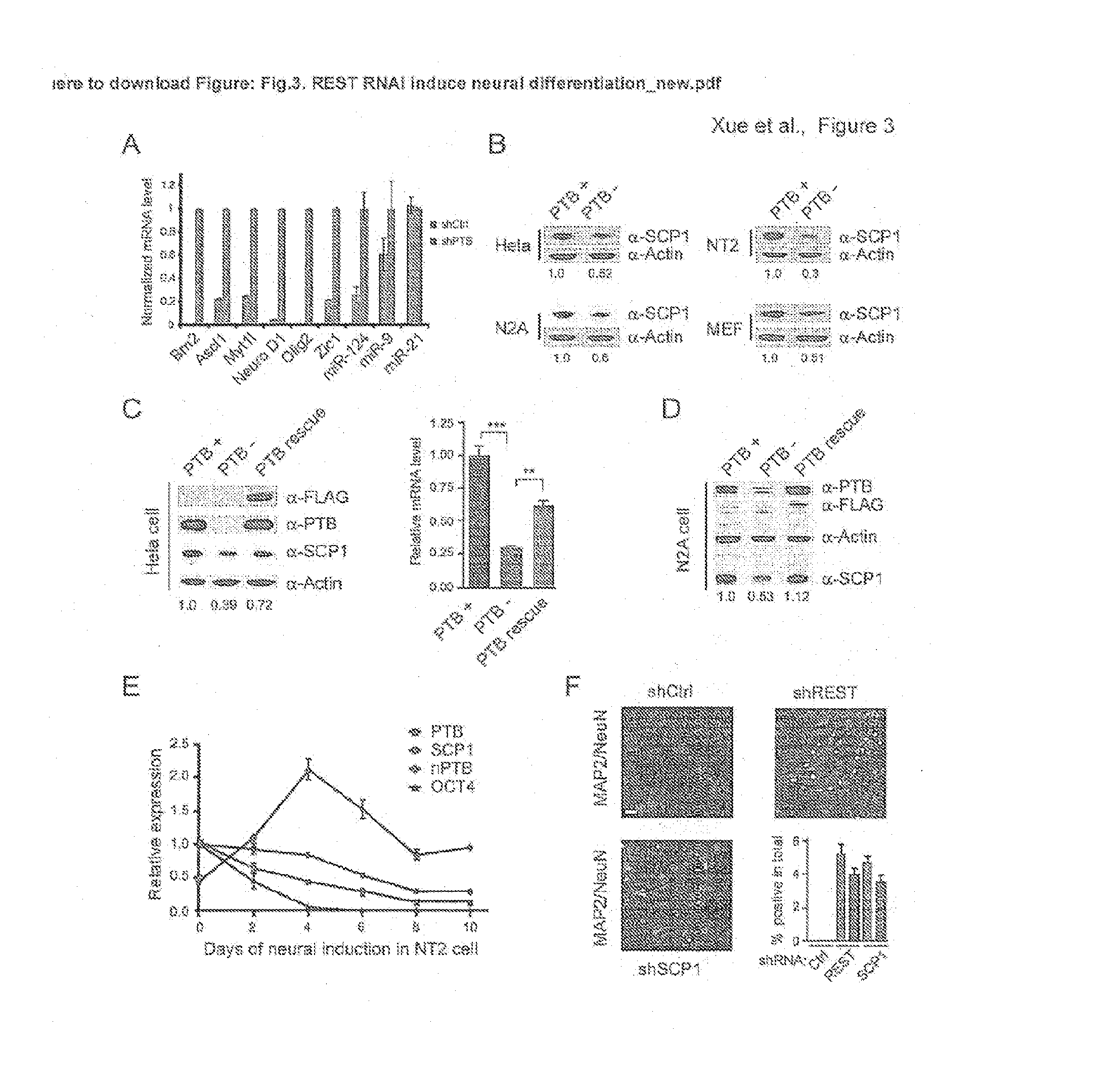Methods for engineering non-neuronal cells into neurons and using newly engineered neurons to treat neurodegenerative diseases
a technology of neurodegenerative diseases and non-neuronal cells, which is applied in the field of cellular and developmental biology and regenerative medicine, can solve problems such as the switch between ptb and nptb
- Summary
- Abstract
- Description
- Claims
- Application Information
AI Technical Summary
Benefits of technology
Problems solved by technology
Method used
Image
Examples
example 1
[0133]This invention for the first time demonstrates that inactivation of a single RNA polypyrimidine tract binding protein (PTB) is sufficient to induce the expression of a specific set of transcription factors, which act together to trigger trans-differentiation of diverse cell types into functional neurons. The inventors found that a single RNA binding protein PTB, which is naturally down regulated during brain development, is involved in regulating RNA metabolism at both the splicing and microRNA levels. The function of PTB in regulating microRNA targeting in the human genome was first demonstrated in this study. These functions cause a series of molecular switches, a most important one being the inactivation of the RE1-Silencing Transcription factor (REST; also known as Neuron-Restrictive Silencer Factor, or NRSF) complex. This leads to the induction of a series of neuronal specific genes in non-neuronal cells. In the presence of other neural trophic factors, the morphologicall...
PUM
| Property | Measurement | Unit |
|---|---|---|
| particle size | aaaaa | aaaaa |
| temperature | aaaaa | aaaaa |
| resistance | aaaaa | aaaaa |
Abstract
Description
Claims
Application Information
 Login to View More
Login to View More - R&D
- Intellectual Property
- Life Sciences
- Materials
- Tech Scout
- Unparalleled Data Quality
- Higher Quality Content
- 60% Fewer Hallucinations
Browse by: Latest US Patents, China's latest patents, Technical Efficacy Thesaurus, Application Domain, Technology Topic, Popular Technical Reports.
© 2025 PatSnap. All rights reserved.Legal|Privacy policy|Modern Slavery Act Transparency Statement|Sitemap|About US| Contact US: help@patsnap.com



